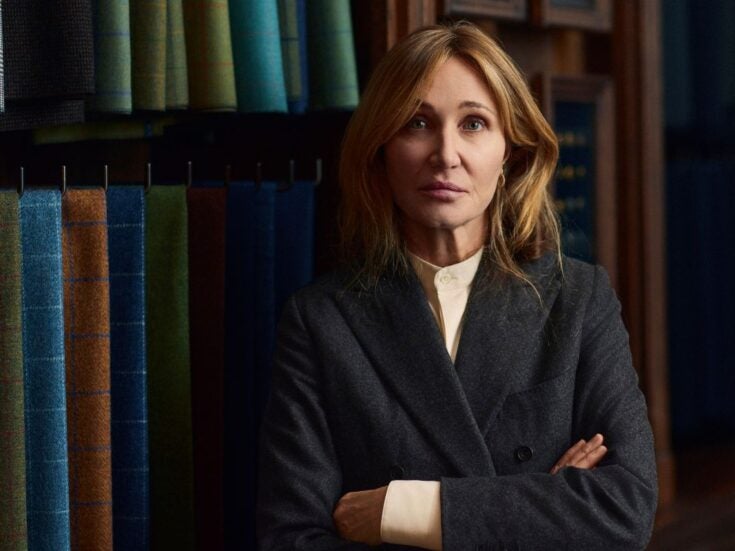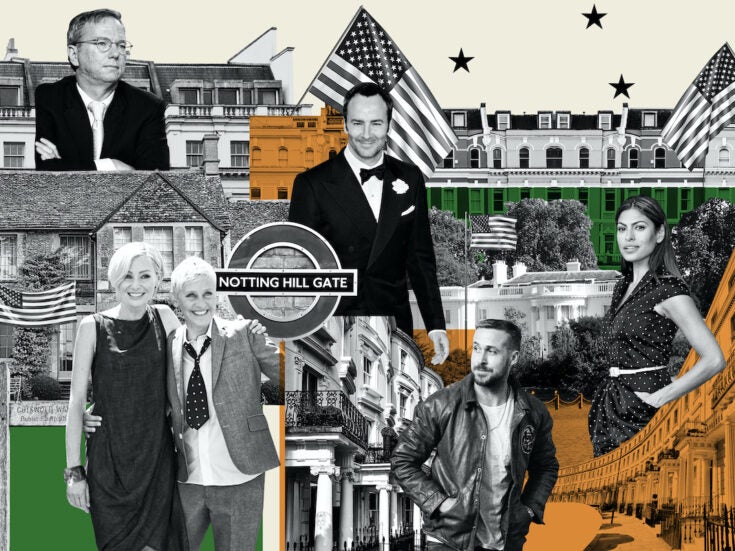Sophie McBain reports from Uganda on a project that is revolutionising how we think about aid, encouraging private schools that will become self-sufficient
Sophie McBain reports from Uganda on a project that is revolutionising how we think about aid, encouraging private schools that will become self-sufficient
I COULD PRESENT you with a standard image of my trip to visit schools in Uganda. Something like, ‘The road from Kampala westwards to Hoima is lined with hand-painted signs for local schools, and twice a day streams of children in big, bright uniforms can be seen walking slowly along the red roadside mud. They often walk for hours to and from school, swinging threadbare book bags or tiny Tupperware lunchboxes, more often than not empty-handed.’
But that’s conventional — too conventional to capture the surprising experiment of the marriage of business and charity spreading across Uganda, one that is rethinking our traditional ideas of philanthropy and aid.
Peas (Promoting Equality in African Schools) describes itself as a charity and social enterprise hybrid, and in a country where only one in four children is enrolled in secondary school, it is pioneering a model to deliver low-cost, high-quality secondary education to the areas that need it most.

It works like this: the capital costs for Peas schools are fundraised in the UK, but after a few years each school should become financially self-sufficient. The schools’ running costs are covered by a combination of a government subsidy of 47,000 Ugandan shillings (£11.60) per pupil, low fees of USh 52,000 (£12) a term, and an income-generating activity (IGA), often a farm, attached to the school. Fees at Peas schools are less than half the average price for a private school in Uganda, and USh 19,000 (£5) lower than fees at supposedly free government schools — but then you might think it strange that Peas should charge the poor at all.
James Tooley, professor of education policy at Newcastle University and co-founder of Omega, a chain of low-cost (although, unlike Peas, profit-making) private schools in Ghana, disagrees. ‘Poor parents around the world say their children are abandoned in government schools and they would prefer to pay fees and know that the school is accountable to them. And that accountability is key,’ he says.
When charities and social enterprises charge, it preserves this accountability. ‘It’s actually a pro-poor policy to charge for schools,’ argues Professor Tooley. In India, around 80 per cent of the urban poor now educate their children privately, in Kenya it’s around 70 per cent, while in the areas where Omega works in Ghana, it’s around 65 per cent.
It would only cost £3 a month to support a Ugandan child through a Peas school — we’re all familiar with this line of fundraising. But John Rendel, CEO of Peas, would rather you didn’t give in this way. When charities offer donors the chance to sponsor individual children, it may be an ‘attractive fundraising proposition’, Rendel concedes — but it means the benefits of the donation only last as long as the direct debit. He says Peas can make your money work harder.
‘Peas is trying to set up a social enterprise so the capital that people invest into the launch of each school sets up a business, which then helps Johnny through school, then Johnny’s brother, and sister, ad infinitum,’ Rendel explains. ‘What this means is that the amount you might give to educate a child for four years in a Peas school will educate five children for four years over a twenty-year period.’
Visit this part of Uganda, and the argument that aid money should work harder and more sustainably gains appeal. In 2010 the country received £1.1 billion of official development aid, and everywhere is littered with rusty placards for NGO projects on health, sanitation and education. Yet many villagers are forced to drink muddy, stagnant water, around one in ten children won’t live to the age of five, and the average Ugandan can only expect to live to 53. It’s hard to say what the country would be like without aid, but this alone makes a strong case for an aid rethink.

WE FOLLOWED THE Hoima road a few kilometres beyond Kampala, until the 4×4 turned off on to a small dirt track. The car inched painfully over the grooves and crevices carved out by daily downpours, and we passed tiny, dilapidated mud-brick houses with neat plots of farmland behind and small clusters of curious children in front, until we finally reached Justine Nantengo’s home.
Justine is a single mother of six and has always been determined to see her children through school. ‘If you don’t take care of your child’s education, it’s like burying the future of a child,’ she says. ‘I know from current affairs that if you have no education, it’s no good.’
It hasn’t been easy — her co-workers at the banana plantation often say she’s ‘not a woman but a man’ because of how hard she labours, her eldest son, John-Mary, says. Even so, John-Mary almost didn’t make it to secondary school. Until Peas opened a school called Onwards and Upwards nearby, all the local secondary schools were prohibitively expensive.
John-Mary visited Onwards many times before it opened, excitedly returning from the building site with endless leaflets for Justine. He enrolled in 2008, on the day the school opened. Two years later, John-Mary graduated with the third highest grades in the district and now he’s funding a degree by teaching at the school.
Peas’ focus on secondary, rather than primary education, is not accidental but reflects an awareness of the potential distortions that foreign aid can create. Across Africa, a post-millennial push by both governments and aid organisations to increase primary school enrolment, has generally been successful. In Uganda, just over 90 per cent of children now attend primary school — but thousands end up in John-Mary’s position, leaving primary school and finding they have nowhere else to go.
‘There are big returns to secondary education, but no one’s concentrating on it,’ says Rendel. He can quote plenty of statistics to support his point: for every year that a girl spends in school, she can add up to 25 per cent more to her future earnings, and educated girls are seven times less likely to catch HIV, while their children are twice as likely to live beyond the age of five.
Moreover, further education doesn’t only benefit the individual — according to a recent Education for All report, for every $1 invested in education, $10-15 can be generated in returns through higher economic growth. With almost 40 per cent of the country living below the poverty line on the equivalent of less than $1.25 a day, Uganda cannot afford to ignore this line of argument.

ONWARDS AND UPWARDS was the first Peas school to become financially self-sufficient. When we arrived, the recent maize harvest was drying on red tarpaulin in the front courtyard — the school’s target is to make USh 6 million (£1,475) this year through its IGA. The IGA is not only intended to supplement the school’s income, but should also offer a practical learning environment for the pupils. Arable farming is currently the most popular form of IGA attached to a Peas school — and in a country where around three-quarters of the workforce are in agriculture, this kind of training can be invaluable. ‘While secondary education gives you access to formal employment, it also means that if you’re a farmer, you’re a more productive farmer,’ says Rendel.
Moses Mwanje, the school’s director, offers a quick tour of the rest of the school. He leads me quickly around the simple mud-brick school buildings and dormitory blocks — some of which were built by students — allowing me to poke my head in the crowded but hushed classrooms and examine the vast pot of maize porridge, posho, bubbling away in the open-plan kitchen.
The facilities are simple — you won’t find iPads or magic white boards here — but grades are improving. When Onwards opened four years ago it had only 178 pupils; now there are 660. ‘I never thought we’d reach this far,’ Mwanje laughs, cheerfully recalling the difficulties of initially boosting enrolment, finding solutions when parents stop paying school fees and keeping teachers motivated on measly salaries in a country where teacher absenteeism is around 30 per cent.


PEAS CURRENTLY OPERATES just fourteen schools, but this still makes it one of the largest secondary school networks in Africa. It hopes to build 100 schools in Uganda by 2017, creating 100,000 low-cost secondary-school places in the process.
Already, Peas’ model is attracting attention. It has partnered with the Costa Foundation for the building of four schools, and with ARK (the charity founded by Arki Busson) for two more. Between 14 September and 13 December this year, the UK’s Department for International Development has agreed to match-fund public donation to Peas. As part of this ‘Back to School’ appeal, Peas aims to get 16,000 children into education.
Some of the most important partnerships are the local ones, however, because no school can run effectively without the co-operation of its local community. We travelled around 250km west of Kampala, to Greenshoots school, located near the tiny trading village of Kigorobya. In this rural, deprived backwater, education is seen not simply as a means of self-improvement, but also of survival.
The head of the school’s parent-teacher association is Samuel Nyendwoha, a local tobacco farmer. ‘I’ve educated all my children, I know the value of education, and I want my friends to understand the same,’ he says. I ask him what education means to him, and he replies: ‘When you stay with an illiterate and ask for water, they will get you dirty water. People are still getting diseases like dysentery and cholera, from bad water.’
Samuel decided to fundraise in order to bring electricity to the school, as he wanted boarders to be able to do their prep in the evenings. His local whip-around raised enough funds to connect the school to the electric grid, with some money spare to buy extra chairs and desks.
It’s a surprising scenario: a social enterprise receiving charitable donations from the very community it’s intended to serve — but this precisely illustrates the insight shared by Peas and other emerging models for low-cost private education: when the poor see the value of education, they will pay for it. And, when a group of subsistence farmers decide to make a charitable donation to your organisation, you’ll struggle to find a more powerful endorsement.
You can donate to Peas at peas.org.uk/donate
Photography by Caroline Bettaney
Read more by Sophie McBain
Don’t miss out on the best of Spear’s articles – sign up to the Spear’s weekly newsletter






